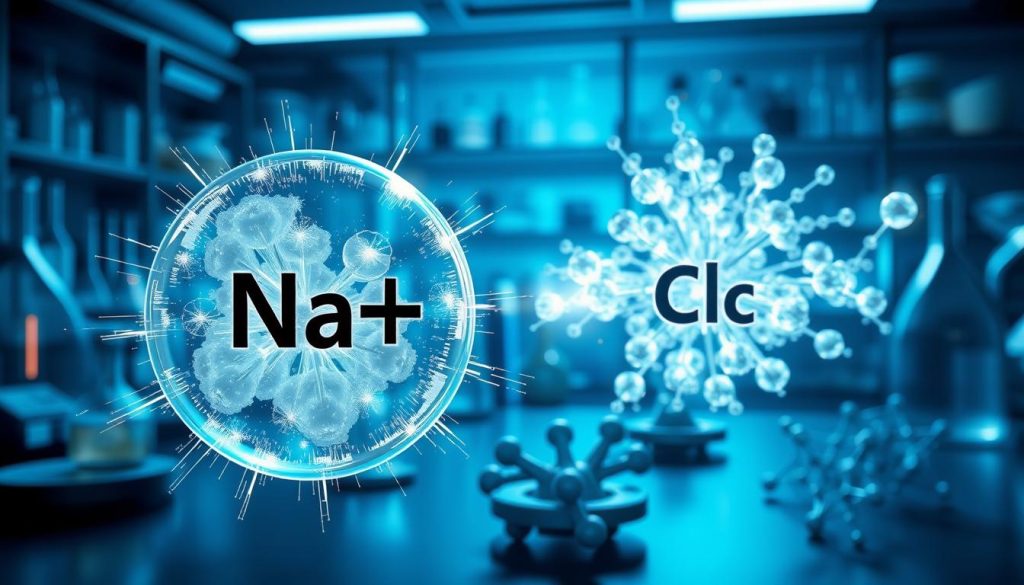Have you ever noticed how refreshed and energized you feel after spending time in nature, especially near waterfalls, beaches, or mountains? This invigorating feeling can be attributed to the presence of negative ions in the natural environment. On the other hand, spending extended periods in enclosed spaces with electronic devices can leave you feeling drained and fatigued due to the abundance of positive ions. But what exactly are ions, and how do they impact our health and well-being?
Ions are charged particles that play a crucial role in our daily lives, influencing air quality and our overall health. While both negative and positive ions exist in our surroundings, they have distinct characteristics and effects on our bodies and minds. Understanding the key differences between these two types of ions can help you harness their power to improve your well-being and create a healthier living environment.
In this article, we will delve into the science behind negative and positive ions, exploring their origins, health benefits, and impact on our surroundings. By the end of this piece, you will have a clearer understanding of how these invisible particles shape our world and what you can do to optimize your exposure to the beneficial effects of negative ions.
What Are Ions and How Do They Affect Us?
Ions are an essential component of our environment, playing a crucial role in various aspects of our lives, including our health and well-being. To understand the significance of ions, it’s important to grasp the basics of what they are and how they function.
Understanding the Basics of Ions
An ion definition is a charged molecule that has either gained or lost electrons, resulting in a positive or negative charge. These charged molecules are created through various natural processes, such as the interaction of water molecules with air, sunlight, and other elements. Ions can be found in the air we breathe, the water we drink, and even within our bodies.

Ions come in two forms: positive ions (cations) and negative ions (anions). Positive ions are formed when an atom or molecule loses one or more electrons, while negative ions are created when an atom or molecule gains one or more electrons. The balance between positive and negative ions in our environment can have a significant impact on our health and well-being.
The Impact of Ions on Human Health and Well-being
Ions, particularly negative ions, have been linked to various health benefits. One of the most notable effects of negative ions is their impact on the respiratory system. When negative ions are inhaled, they can help to reduce inflammation in the airways, alleviate symptoms of allergies and asthma, and improve overall lung function.
In addition to their physical health benefits, ions have also been shown to influence mental well-being. Exposure to negative ions has been associated with improved mood enhancement, reduced stress levels, and increased feelings of relaxation. This is believed to be due to the ability of negative ions to increase serotonin production, a neurotransmitter that plays a key role in regulating mood and promoting feelings of happiness and well-being.
On the other hand, excessive exposure to positive ions has been linked to various negative health effects, such as fatigue, headaches, and decreased cognitive function. This is why it’s essential to maintain a balance between positive and negative ions in our environment to promote optimal health and well-being.
The Science Behind Negative Ions
Negative ions are naturally occurring molecules that have gained an extra electron, giving them a negative charge. These invisible particles are abundant in nature, particularly near waterfalls, in forests, and after thunderstorms. But what is the science behind their creation and the benefits they offer?
How Negative Ions Are Created in Nature
Negative ions are generated through various natural processes. One of the most well-known sources is the Lenard effect, which occurs when water droplets collide and break apart, such as at the base of waterfalls or crashing ocean waves. The splitting of water molecules releases negative ions into the surrounding air.

Another natural phenomenon that produces negative ions is the friction created by moving air, such as wind blowing through trees in a forest. Lightning strikes during thunderstorms also generate a significant amount of negative ions, contributing to the fresh, invigorating feeling in the air post-storm.
The Benefits of Exposure to Negative Ions
Exposure to negative ions has been linked to numerous health benefits. One of the most notable is their ability to purify the air by attaching to positively charged particles like dust, pollen, and other allergens, causing them to become too heavy to remain airborne. This natural air purification process can help alleviate allergies and improve respiratory health.
In addition to air purification, negative ions have been shown to have a positive impact on mental well-being. Studies suggest that exposure to negative ions can help reduce stress, improve mood, and increase overall feelings of relaxation. This may be due to their ability to influence serotonin levels in the brain, a neurotransmitter associated with happiness and well-being.
Negative Ion Generators and Their Effectiveness
While nature provides an abundant supply of negative ions, modern living often limits our exposure to these beneficial particles. To combat this, negative ion generators have been developed to mimic the natural production of negative ions indoors. These devices work by using high voltage to ionize air molecules, releasing negative ions into the surrounding environment.
The effectiveness of negative ion generators can vary depending on factors such as room size, placement, and the quality of the device. While some studies have shown promising results in terms of air purification and mood enhancement, more research is needed to fully understand the extent of their benefits. Nonetheless, incorporating a high-quality negative ion generator into your home or workspace may help create a healthier and more refreshing indoor environment.
Positive Ions: The Other Side of the Coin
While negative ions are often praised for their health benefits, positive ions are frequently associated with potential risks to our well-being. Positive ions are commonly generated by electronic devices, air pollution, and electromagnetic radiation, which have become ubiquitous in modern life.
Exposure to excessive amounts of positive ions has been linked to various health risks, including:
- Respiratory issues
- Fatigue and decreased energy levels
- Headaches and migraines
- Reduced mental clarity and focus
- Mood disturbances and increased stress levels
Studies have shown that spending prolonged periods in environments with high concentrations of positive ions, such as offices filled with electronic devices or heavily polluted urban areas, can lead to a decrease in overall well-being. The electromagnetic radiation emitted by devices like computers, smartphones, and televisions can disrupt the body’s natural balance, leading to potential health consequences.
Moreover, air pollution, particularly in densely populated cities, contributes to the abundance of positive ions in the atmosphere. The fine particulate matter and other pollutants in the air can carry a positive charge, further increasing our exposure to these potentially harmful ions.
To mitigate the health risks associated with positive ions, it is essential to take proactive measures. These may include:
- Limiting exposure to electronic devices and electromagnetic radiation
- Ensuring proper ventilation and air filtration in indoor spaces
- Spending time in nature, where negative ions are more abundant
- Using negative ion generators to counteract the effects of positive ions
By understanding the potential dangers of excessive exposure to positive ions and taking steps to reduce their impact, we can create a healthier and more balanced environment for ourselves and those around us.
Negative Ions vs Positive Ions: Key Differences
While both negative and positive ions are present in the air we breathe, they have vastly different effects on our health and well-being. Understanding the key differences between these two types of ions is crucial for maintaining optimal indoor air quality and promoting overall health.
Origins and Sources of Negative and Positive Ions
Negative ions are abundantly found in natural sources, such as waterfalls, forests, and beaches. These environments are known for their fresh, invigorating air that promotes a sense of well-being. On the other hand, positive ions are more prevalent in man-made sources, such as electronic devices, air conditioning systems, and polluted urban areas.

Effects on Physical and Mental Health
Exposure to negative ions has been linked to numerous health benefits, including improved cognitive function, reduced stress levels, and enhanced mood. Negative ions are also believed to alleviate symptoms of seasonal affective disorder (SAD) and boost overall energy levels. In contrast, excessive exposure to positive ions may contribute to feelings of fatigue, irritability, and decreased mental clarity.
Impact on Air Quality and Environment
Negative ions play a crucial role in maintaining healthy indoor air quality by neutralizing pollutants, allergens, and airborne pathogens. They can help to reduce the incidence of respiratory issues, such as asthma and allergies, by promoting cleaner, fresher air. Positive ions, on the other hand, can contribute to the accumulation of pollutants and may exacerbate respiratory problems in sensitive individuals.
| Characteristic | Negative Ions | Positive Ions |
|---|---|---|
| Natural Sources | Waterfalls, forests, beaches | Minimal |
| Man-made Sources | Negative ion generators | Electronic devices, air conditioning, polluted areas |
| Cognitive Function | Improved mental clarity and focus | Decreased mental performance |
| Respiratory Health | Alleviation of respiratory issues | Potential exacerbation of respiratory problems |
Harnessing the Power of Negative Ions in Daily Life
Incorporating negative ions into your daily routine can have a profound impact on your physical and mental well-being. By engaging in outdoor activities and utilizing negative ion technology at home and work, you can experience the benefits of these essential particles firsthand.
Incorporating Negative Ion-Generating Activities
One of the simplest ways to increase your exposure to negative ions is by spending time in nature. Engaging in outdoor activities such as hiking in forests, walking along the beach, or sitting near waterfalls can provide a natural boost of negative ions. These environments are rich in negative ions due to the presence of moving water and lush vegetation.

Another way to bring the benefits of negative ions into your home is by incorporating houseplants. Certain plants, such as peace lilies, snake plants, and Boston ferns, are known for their air-purifying properties. These plants naturally release negative ions while absorbing pollutants, effectively improving the air quality in your living spaces.
| Houseplant | Air-Purifying Benefits |
|---|---|
| Peace Lily | Removes formaldehyde, benzene, and trichloroethylene |
| Snake Plant | Filters out formaldehyde, xylene, and toluene |
| Boston Fern | Absorbs formaldehyde, xylene, and benzene |
Using Negative Ion Technology at Home and Work
In addition to natural sources, negative ion technology can be utilized to enhance the air quality in your home and office environment. Air purifiers equipped with negative ion generators can effectively remove pollutants, allergens, and airborne particles, creating a cleaner and healthier atmosphere.
Incorporating negative ion technology into your bedroom can also improve your sleep quality. Negative ion generators designed for sleep produce a gentle stream of negative ions that can promote relaxation, reduce stress, and enhance overall sleep experience.
By combining outdoor activities, houseplants, and negative ion technology, you can create a harmonious environment that supports your well-being and allows you to harness the power of negative ions in your daily life.
The Future of Ion Research and Applications
As our understanding of the impact of ions on human health and well-being continues to grow, the future of ion research and applications looks promising. Scientists are conducting ongoing studies to further explore the potential therapeutic applications of negative ions in various settings, from healthcare facilities to homes and workplaces. These scientific studies aim to provide more conclusive evidence on the benefits of negative ions and their role in promoting physical and mental health.
In addition to therapeutic applications, the future may see the incorporation of ion balance into indoor air quality standards. As people spend more time indoors, ensuring a healthy balance of negative and positive ions in these environments becomes increasingly important. By establishing guidelines and standards for optimal ion levels, we can create healthier living and working spaces that promote well-being and productivity.
Public health initiatives may also begin to recognize the significance of ion balance in the coming years. By raising awareness about the impact of ions on human health and encouraging the adoption of negative ion-generating practices and technologies, these initiatives can contribute to a healthier population. As research continues to uncover the full potential of negative ions, we can expect to see more innovative applications and solutions that harness their power to improve our daily lives.

